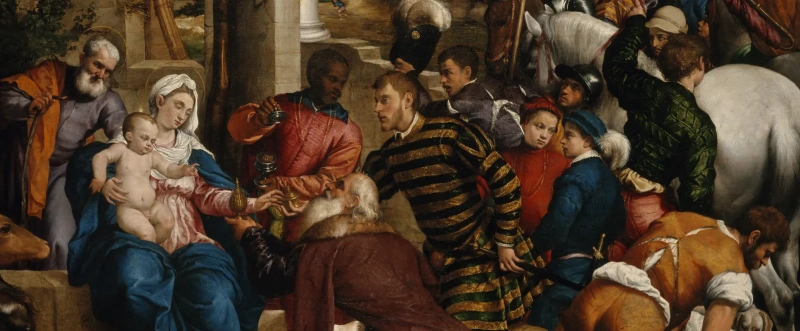Pietro Da
Cortona
Pietro da Cortona (ital. Pietro da Cortona) (Nast. name Pietro Berrettini, Berrettini) (November 1, 1596, Cortona, Arezzo - may 16, 1669, Rome) is an Italian painter and architect.
One of the most brilliant masters of the Baroque, the Creator of lush theatrical fresco ensembles in the palaces of Rome and Florence. His monumental paintings, the sanctuary images for churches, easel paintings by order of the aristocracy were distinguished by a high level of performance and inspiration. Being a native of Tuscany, he started work there, but in 1612 started to work in Rome.
His talent was noticed by Pope urban VIII Barberini, who became his patron. In its own way, based on the principles of classicism artists of the Bolognese school, imitation Carracci, he brought alive, full of imagination details, dynamic camera angles, often borrowed from ancient sculpture, and also solemn and elegant flair.
Among the best works of the artist's painting "Madonna with saints" (1626-1628, Cortona, Museum of Etruscan history), which embodied all the splendor of the Baroque altar of the image. In sun-drenched space if there is a movement of all shapes. Addiction Baroque complex symbolism indicates rich and allegorical content. The painting was executed by order of the family of Passerini and contains the symbols of the spiritual orders of knighthood, belonging to the proud members of this noble family.
The painting on the myth of "the rape of the Sabine women" (1627-1629, the Capitoline museums, Rome) was written by request of another patron of the artist - Roman patron Sacchetti. Classic clearly thought-out composition is combined in him with wild, theatrical expression. Violent turns figures, possibly borrowed from the works of Giovanni Lorenzo Bernini, with which the artist has worked and talent which was highly valued.
No less impressive painting "the Finding of Romulus and Remus (1643, Louvre), the full dynamics of light and color. Stories about the Foundation of the Eternal city was highly valued by an enlightened aristocracy, which sought to prove the antiquity of their origin. Reminiscences sensual beauty of ancient art always played a large role in the artist ("Sacrifice Diana", national gallery of old art, Rome).
The major work of Pietro da Cortona in Rome became his fresco "Triumph of Divine Providence" (1633-1639, Rome, Palazzo Barberini), written in the ceiling of the Main hall of the Palace of the Pope urban VIII Barberini. Work in the apartments of the Palace was entrusted to him together with Giovanni Bernini.
After painting gallery of Palazzo Farnese, full Carracci, Pietro da Cortona became the Creator of a different type monumental Baroque painting with as if they cover all obstacles, soaring heavenly space, bursts into the room clouds floating in relying on them figures of the heroes of the myths of the Holy Scriptures, allegorical characters. All they seem to float across the sky, surrounded by scattered shining from the sun light. The religious story combines them with the idea of celebrating the Pope Barberini as head of the Catholic Church and the scientist, and his glorious lineage. Therefore, in the painting entered the elements of heraldic symbols in the form of an image of bees with unfolded wings. For this grandiose work of Pietro da Cortona was awarded the title of Prince of the Roman Academy of San Luca, honorary titles who approved it in the first artist in Rome. In these years he had already most prestigious workshop in Rome in the late paintings were commissioned revision own idea of his disciples. Significant work of the artist of steel and painted enfilade of state rooms of the Palazzo Pitti in Florence (1640), painting Palazzo Pamphili and the Church of Chiesa Nuova in Rome.
In the architecture of talent Pietro da Cortona appeared from no less brightness. In its most significant buildings in Rome: Villa Sacchetti (1625-1630), the churches of the Saints Luke and Martina (1634-1650), Santa Maria in via Lata (1658-1662), Santa Maria della Pace (1656) - he showed himself as an outstanding architect of the Baroque. Fan of ideas Bramante and Palladio, he creatively processed their heritage. One example of his great talent is, for example, the ensemble of the square to the Church of Santa Maria della Pace, which clearly embodied the town planning principles of the Roman Baroque, organic plastic thinking talented masters of this age. His sculpture of the goddess Diana completed the design of the ensemble of the square Four fountains.
After the death of Guido Reni in 1642 Pietro da Cortona moved to Bologna, where he became the head of the local school of painting. In the most recent writings of his earlier lush scenic theatrical style more acquired in the period 1642-66, features thoughtful asceticism.
-
Artworks liked by6 users
- Artworks in 10 selections
Publication
Exhibitions
All exhibitions of the artistFeed
Italian Renaissance 1470 - 1600exhibition finished

Italian Renaissance 1470 - 1600started



















